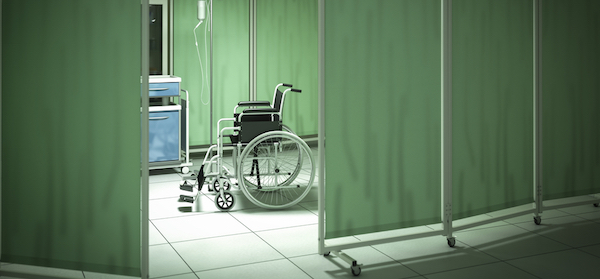The performance of public hospitals around Australia have been reviewed in the The Australian Medical Association 2016 Public Hospital Report Card – and the results aren’t positive.
Emergency departments were responsible for some of the most unsatisfactory results. Of primary concern are increasing waiting times. Last year, only 68 per cent of “urgent” emergency patients were seen within half an hour, failing to meet the 80 per cent target set by state governments. Also, just 73 per cent of emergency visits were completed within four hours, well short of the state-designated 90 per cent target.
The number of hospital beds available across the country increased slightly, but not enough to arrest the significant decline in the number of beds per 1000 population aged 65-plus, which is down more than 42 per cent since 1993-94.
There was some positive news though, with elective surgery waiting and treatment times decreasing for the first time since 2009-10. Treatment times fell by a full day from 36 days to 35 days.
Australian Medical Association President Professor Brian Owler noted that most state governments have made significant efforts to decrease waiting times and to reach the standards they have put in place, but every state is struggling to cope with the increased demands of a growing, ageing population.
Professor Owler is also concerned about the funding black hole that states will face from next year, when they are forced by the Federal Government to bear a larger share of health costs.
“In a struggling public hospital system that’s failing to meet its performance targets that sort of slowdown in funding growth will mean that they will be under further strain, and I think we’ll start to see further clinical services being cut,” he said.
Read more from www.abc.net.au
Opinion: Public hospital system in crisis
For the past two decades, the public hospital system in Australia has been failing to keep up with the increase in population. Not only will the population continue to grow significantly over the coming years, but Australians are also living longer, which will no doubt further contribute to the problems facing the public health system.
Planned funding changes which will come into effect next year, will see the states carry a larger share of public health costs. It should come as no surprise that an increased or broadened GST is the most likely way for the government to try to cover these costs.
The men and women who run our public hospitals do an amazing job, but it’s clear from this report that they are understaffed and under-resourced. Let’s hope for all our sakes that the right plan is put in place to resolve the many issues detailed in the AMA’s report.
What do you think? Does the Federal Government need to act swiftly and implement their planned changes so that the state governments have a clearer picture of funding levels for the coming years? Do we need to allocate more money towards funding public hospitals? How would you solve the long-term need for increased funding of public health and hospitals?

